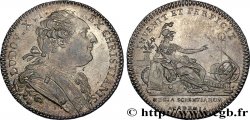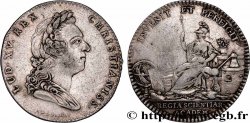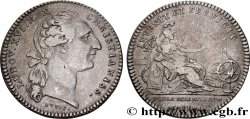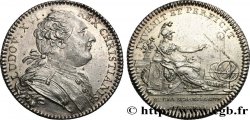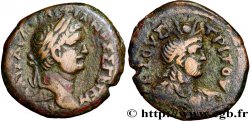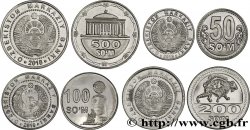E-auction 567-509453 - fme_757660 - FRENCH ROYAL ACADEMY OF SCIENCES Médaille, Nicolas Malebranche
You must signin and be an approved bidder to bid, LOGIN TO BID. Accounts are subject to approval and the approval process takes place within 48 hours. Do not wait until the day a sale closes to register. Clicking on « bid » constitutes acceptance of the terms of use of cgb.fr private e-auctions.
Bids must be placed in whole Euro amounts only. The sale will start closing at the time stated on the item description; any bids received at the site after the closing time will not be executed. Transmission times may vary and bids could be rejected if you wait until the last second. For further information ckeck the E-auctions F.A.Q.
NO BUYER'S FEE.
NO BUYER'S FEE.
| Estimate : | 75 € |
| Price : | 16 € |
| Maximum bid : | 19 € |
| End of the sale : | 26 February 2024 20:05:40 |
| bidders : | 4 bidders |
Type : Médaille, Nicolas Malebranche
Date: n.d.
Mint name / Town : Monnaie de Paris
Metal : bronze
Diameter : 67 mm
Orientation dies : 12 h.
Engraver DROPSY Henry (1885-1969)
Weight : 168,31 g.
Edge : lisse + corne BRONZE
Puncheon : corne BRONZE
Coments on the condition:
Patine hétérogène sur la tranche et le revers. Médaille légèrement nettoyée
Catalogue references :
Obverse
Obverse legend : NICOLAS . MALEBRANCHE . 1638-1715.
Obverse description : Portrait de face de Nicolas Malebranche dans une bibliothèque. Signé : H. DROPSY.
Reverse
Reverse legend : . ACADEMIE . ROYALE . DES . SCIENCES . / (SIGNATURE DE NICOLAS MALEBRANCHE).
Reverse description : Légende en trois lignes au dessus de la reproduction d’un cachet dont le motif est celui d’un homme ailé chevauchant un hippocampe.
Commentary
Nicolas Malebranche (1638-1715) est un philosophe, prêtre oratorien et théologien français. (cf. Wikipédia).








 Report a mistake
Report a mistake Print the page
Print the page Share my selection
Share my selection Ask a question
Ask a question Consign / sell
Consign / sell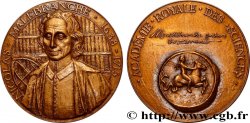
 Full data
Full data
